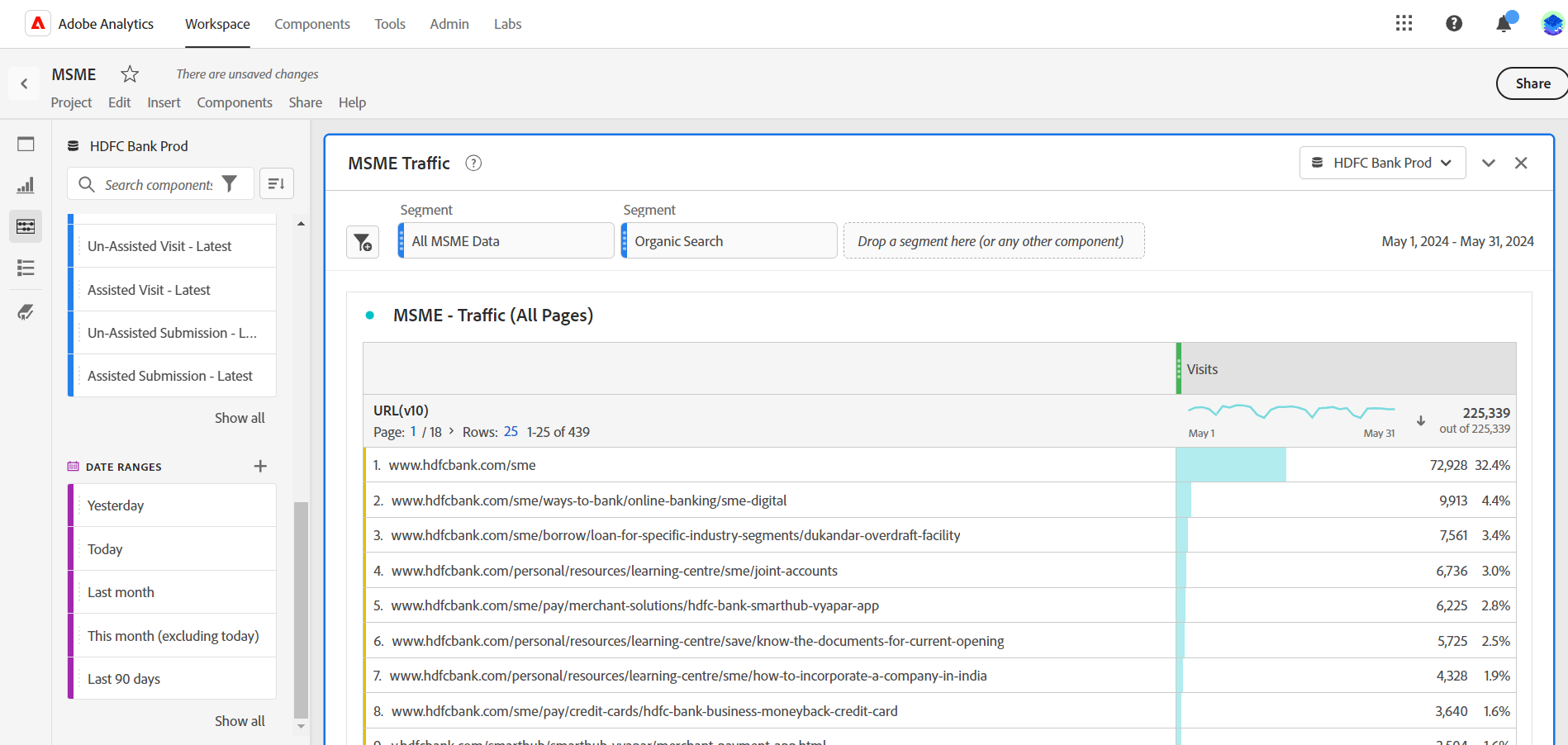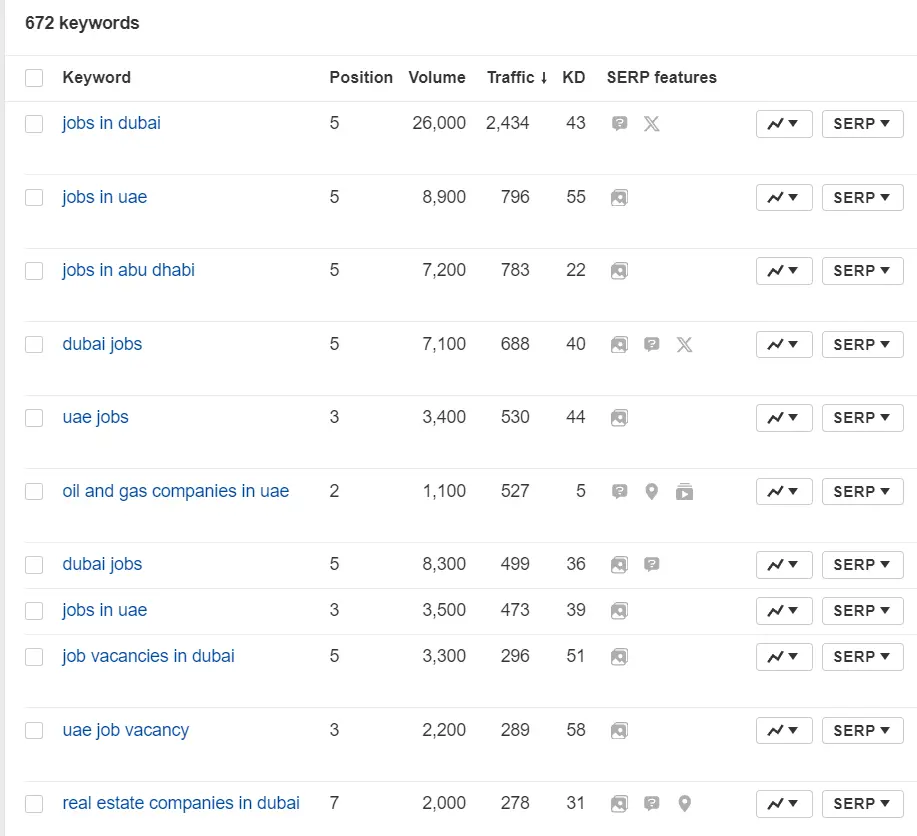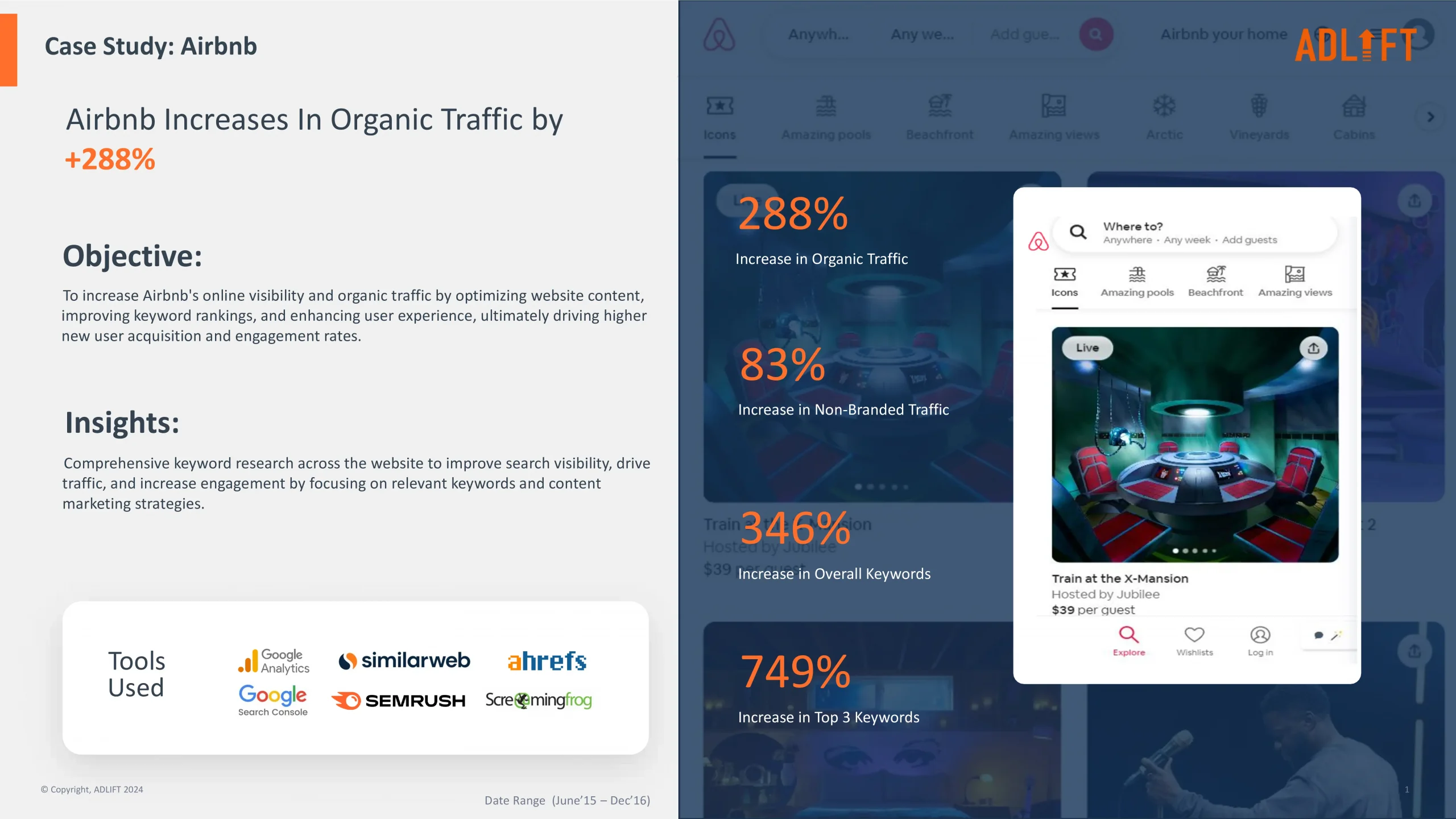Boost Your Strategy with the Right SEO KPIs

Did you know that organic search drives over half of all website traffic? That’s why SEO is not just a buzzword—it’s a key investment for businesses in today’s digital landscape, impacting everything from brand awareness to lead generation. Besides, how do you know if your SEO efforts are paying off? That’s where Key Performance Indicators (KPIs) come in.
According to studies, organic search drives 53% of website traffic, and SEO leads have a 14.6% close rate, far surpassing outbound leads. These KPIs are like your SEO compass, guiding you toward success and helping you fine-tune your strategy. Whether you aim to increase organic traffic, improve keyword rankings, or boost conversions, tracking the right SEO KPIs can provide valuable insights into your performance and areas for improvement.
In this blog, we’ll explain the essential SEO metrics and KPIs you should track, how to measure them, and how to use them to supercharge your SEO strategy. We’ll cut through the jargon and give you actionable direction to implement immediately.
Why Are SEO KPIs Important?
In the simplest terms, SEO metrics and KPIs are measurable values that indicate the efficacy of your website in achieving its search engine goals. They offer a window into the impact of your SEO efforts, from attracting organic traffic and improving search rankings to increasing conversions and strengthening brand authority.
These SEO KPIs metrics transform raw data into actionable insights, showing what’s working, what’s not, and where to focus your efforts. By meticulously tracking SEO KPIs, you better understand your audience’s behavior, preferences, and target points. This information allows you to refine your content, optimize your website, and make decisions that drive real and organic results.
Types of SEO KPIs
The world of SEO KPIs is diverse, encompassing many metrics catering to different aspects of your online presence. Let’s break them down into categories:
Visibility SEO KPIs:
These SEO KPIs metrics gauge how easily your website is found online. They include organic traffic, keyword rankings, impressions (how often your site appears in search results pages), and click-through rate (CTR), which measures the proportion of users who click on your link after viewing it in search results.
Engagement SEO KPIs:
These SEO KPIs metrics assess how users interact with your website once they land on it. They include bounce rate, time on page, pages per session, and conversion rate (the proportion of users who complete a desired action).
Authority SEO KPIs:
SEO KPIs metrics reflect your website’s prominence and trustworthiness in the eyes of search engine ranking pages(SERP). They include backlinks (links from other reputable websites to yours), domain authority (a score that predicts your site’s ranking ability), and social shares.
Technical SEO KPIs:
These SEO KPIs track the technical domain of your website that impacts its SEO performance. They encompass crawl errors, page speed, mobile-friendliness, and site security (HTTPS).
Local SEO KPIs:
These KPIs are essential if your business targets a local audience. They include Google My Business insights (views, clicks, and actions on your Google My Business listing), local citation accuracy (ensuring your business information is consistent across online directories), and local search rankings.
Choosing the Right SEO KPIs
The “right” SEO metrics and KPIs aren’t one-size-fits-all. They should be carefully chosen to align with your specific business objectives.
Relevance:
Select KPIs that directly reflect your SEO goals. If your primary target is to increase website traffic, focusing on organic traffic and keyword rankings is crucial.
Measurability:
Ensure you can accurately track and quantify the KPIs you choose. Vague or subjective metrics can lead to misleading conclusions.
Actionability:
Opt for KPIs that provide insights you can act upon. A metric is only valuable if it guides your decision-making and helps you improve your SEO strategy.
Here are some examples of KPIs that align with different SEO goals:
Increased Traffic:
Track organic traffic and keyword rankings to measure website visibility and user acquisition through search engines.
Improved Engagement:
Focus on KPIs like time on page and bounce rate to understand how well your content resonates with users.
Higher Conversions:
Conversion rate and goal completion rate become central KPIs to assess how effectively your website drives desired actions.
Brand Awareness:
Monitor social shares and branded search volume to gauge brand recognition and online visibility.
Optimize Your Site with AdLift’s KPI-Driven SEO!
Essential SEO KPIs to Track
While there are numerous SEO KPIs to choose from, certain ones are considered essential due to their widespread applicability and impact on SEO success. Here are some essential metrics that most businesses should monitor:
Organic Traffic
Organic traffic refers to the number of individuals who discover your website via natural search results without any payment involved. It’s an important indicator of your website’s visibility and the effectiveness of your SEO efforts.
Tools for Tracking: Google Analytics and Google Search Console are the primary tools for tracking organic traffic. Google Analytics provides detailed reports on your website’s overall traffic, including organic traffic sources, while Google Search Console focuses on your website’s performance in Google search results.
How to Interpret and Use This Data:
Analyzing organic traffic trends can help you identify which key SEO strategies are working and which need improvement. You can also track traffic for specific keywords to see how well your content ranks for those terms. Understanding where your traffic comes from allows you to tailor your content and optimize your website to attract more organic visitors.
Keyword Rankings
Keyword rankings display where your website appears in search engine ranking pages for specific keywords. Tracking your rankings is essential for understanding your website’s visibility and identifying opportunities to improve your position.
Tools for Tracking:
SEMrush, Ahrefs, and Moz are popular SEO tools that offer keyword ranking tracking features. They provide detailed reports on your website’s rankings for various keywords and insights into your competitors’ rankings.
How to Analyze Keyword Rankings and Make Adjustments:
By analyzing your keyword rankings, you can specify which keywords drive the most traffic to your website and which need improvement. You can then adjust your content and SEO strategy to target high-value keywords and improve your rankings for those terms.
Conversion Rate
The percentage of visitors to a website who take a specific action, like buying something, completing a form, or signing up for a newsletter, is known as the conversion rate. This metric is essential for assessing how well your website is helping you reach your business objectives.
Tools for Tracking:
Google Analytics is the primary tool for tracking conversion rates. You can set up SEO goals in Google Analytics to track specific actions and monitor your website’s conversion performance. It can also provide key insights into how users interact with your web pages and where they may be dropping off.
How to Optimize Landing Pages:
To improve your conversion rates, optimize your landing pages by making them clear, concise, and easy to navigate. Use strong calls to action (CTAs) to encourage users to take the desired action. You can also use A/B testing to experiment with different page layouts and elements to see what works best.
Bounce Rate
Bounce rate is the proportion of users who leave your webpage after viewing only one page. A higher bounce rate can indicate that your content is irrelevant to users’ search queries or that your website could be more user-friendly.
Tips for Reducing Bounce Rate:
To reduce your bounce rate, create high-quality, engaging content relevant to your target audience. Ensure your website is easy to explore and loads quickly. You can also use internal linking to encourage users to explore other web pages on your site.
Click-Through Rate (CTR)
CTR refers to the proportion of visitors who click on your website in search results after viewing it. A high CTR suggests that your title tags and meta descriptions are engaging and pertinent to users’ search queries.
How to Improve CTR:
To improve your CTR, focus on crafting clear, concise, and engaging meta titles, tags, and descriptions that accurately reflect the content on your page. You can also use structured data to provide additional information in SERPs, such as ratings, reviews, and prices.
Get
in Touch
Contact AdLift for a 360-degree marketing plan
Using SEO KPIs to Optimize Your Strategy
SEO KPIs reporting is about using that data to improve your strategy. Here’s how you can leverage your KPI insights:
Identifying Strengths and Weaknesses:
KPI data can help you pinpoint areas where your SEO is performing well and those that need attention. For example, a high bounce rate on a specific page might indicate the need for content optimization.
Data-driven Decision-making:
Leverage the insights gained from your KPI tracking to make informed decisions about your content, technical SEO, and link-building strategies. You can maximize your SEO efforts by focusing on areas with the most significant impact.
Continuous Improvement:
SEO is an ongoing process. Regularly review and refine your KPI selection to ensure you’re tracking the most relevant metrics for your evolving goals. Stay ahead of the graph by adapting to industry trends and algorithm updates.
Building Your Executive SEO Dashboard
A centralized SEO dashboard is your command center for monitoring and analyzing your most critical SEO KPIs.
Here’s why it matters:
Strategic Data Consolidation:
A centralized dashboard allows you to monitor and analyze your most crucial SEO metrics from a single vantage point. This eliminates the need to toggle between multiple platforms and provides a holistic view of your website’s SEO performance.
Selecting the Right Platform:
Several popular SEO platforms offer robust dashboarding capabilities. Consider Google Data Studio, SEMrush, or Ahrefs, each with its unique features and functionalities. Select a platform that aligns with your distinctive SEO needs and budget.
Customization for Executive Insights:
Customize your dashboard to showcase KPIs that resonate with your executives and provide actionable insights for strategic decision-making. Focus on metrics directly tied to your business objectives and avoid overwhelming viewers with excessive data.
Data Visualization Best Practices:
Present your data clearly, concisely, and visually appealingly. Use charts, graphs, and other visual aids to demonstrate SEO performance to your team and stakeholders. Compelling visuals are the key to ensuring everyone grasps complex information and is aligned on the same goals.
Case Studies: How AdLift Leveraged SEO KPIs
Case Study 1: Airbnb
As Airbnb’s SEO agency, AdLift delivered incredible organic traffic growth. Read on for our tailored SEO strategy for the brand:
The Results
- 288% Increase in Organic Traffic: That’s nearly triple the number of people who find Airbnb through search engines like Google without paid advertising.
- 346% Increase in Overall Keywords: This means Airbnb’s content showed up in search results for a much wider range of terms that potential guests might use.
- 83% Increase in Non-Branded Traffic: People weren’t just searching for “Airbnb”—they were finding the company through broader searches related to travel and accommodations.
- 749% Increase in Top 3 Keywords: Airbnb’s pages consistently appeared at the top of search results, where most clicks occur.
The Objective
So, what was Airbnb aiming for? The goal was simple but ambitious:
Boost Online Visibility: Make it easier for people to find Airbnb through search engines.
Grow Organic Traffic: Attract more visitors without relying solely on paid ads.
Improve Keyword Rankings: Dominate search results for the most relevant terms.
Enhance User Experience: Ensure the website is easy to use and engaging.
Drive New Users and Engagement: Ultimately, bring in more guests and keep them returning.
The Strategy
How did we achieve all this? Our case study highlights a few primary SEO KPIs:
Keyword Research: We didn’t just guess what people were searching for. We meticulously researched keywords to understand exactly what their target audience typed into search engines.
Content Optimization: Our team crafted content relevant to these keywords and valuable to their potential customers. This involved creating informative articles, engaging blog posts, and optimizing website copy.
Technical SEO: We ensured that their website was technically sound, making it easy for search engines to crawl and index their pages.
Increase Your SEO Traffic with AdLift!
Case Study 2: Walmart
Everybody knows Walmart – it’s the retail giant. However, even giants need help sometimes. Walmart wanted to draw in more shoppers through organic search (those unpaid search results we all click on), and that’s where we stepped in as Walmart’s SEO agency.
The Results
Traffic Explosion: Walmart’s organic traffic increased by a staggering 125%. This means over double the number of people discovering their online offerings through search engines.
Keyword Dominance: They secured a stronger foothold in search results with significant improvements in keyword rankings:
-
- 45% increase in the top 20 keywords
- 27% increase in the top 10 keywords
- 38% increase in the top 3 keywords
The Objective
Walmart’s objective was clear to increase:
New User Acquisition: Attract fresh eyes to their website.
Increased SEO Traffic: Solidify their presence as the go-to online retailer.
The Strategy
To achieve these search engine goals, we implemented comprehensive SEO KPIs metrics with three key pillars:
Robust Keyword Research: We left no stone unturned in identifying the exact words and phrases their customers used to search for products online. This ensured they were targeting the right terms in their content.
Technical and On-Page SEO Optimization: We fine-tuned the technical aspects of their website (like URLs and meta tags) and optimized individual pages with relevant keywords and engaging content.
Content Marketing Across Core Verticals: The strategy was not just focused on products. We created informative and engaging content across various topics to attract a broader audience and build their website’s authority.
Putting It All Together: Your SEO Power Move
AdLift’s Airbnb and Walmart case studies highlight the power of focusing on key SEO KPIs. Both companies saw massive organic traffic growth by understanding their audience’s search behavior and tailoring their strategies accordingly.
We tracked important SEO metrics and KPIs like keyword rankings, organic traffic, and top-ranking keywords. By optimizing their websites with technical SEO best practices and creating relevant content, we improved their online visibility and attracted more customers.
These case studies prove that SEO is about aligning your strategy with your target audience’s needs. Businesses can achieve impressive results and drive sustainable growth by tracking the right SEO KPIs and making data-driven decisions.
Source:
Organic Share of Traffic Increases to 53%
Get
in Touch
Contact AdLift for a 360-degree marketing plan
Recent Posts
- What is Schema Markup? Strategies to Use it for Better SEO Performance September 16, 2024
- How to Attract Customers? Steps to Turn Visitors into Loyal Clients September 12, 2024
- 10 Digital Marketing Tips to Supercharge Your Clothing Brand September 10, 2024
- Mastering Digital Advertising: Tips for Maximum Impact September 8, 2024
- Everything You Need to Know about SEO Statistics: Ultimate Guide to Data and Facts September 4, 2024
- From Traffic to Website Leads: Maximize Your Conversion Rate September 4, 2024
- Content Marketing Lead Generation: Strategies that Work September 4, 2024
- What is Meme Marketing? How to Tap Into Viral Culture September 4, 2024
- 7 E-commerce SEO Strategies to Futureproof Your Online Store September 2, 2024
- B2B SEO Strategy: The Key to Boost Your Business August 29, 2024







